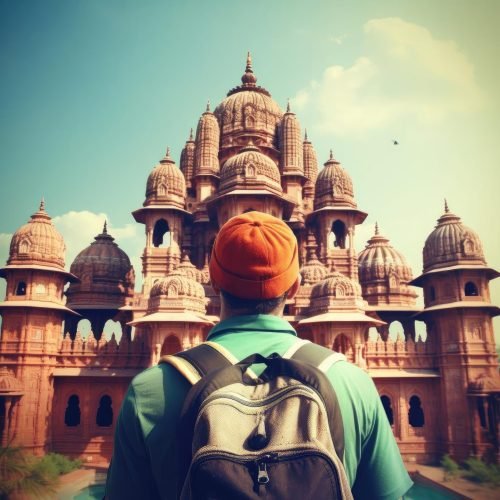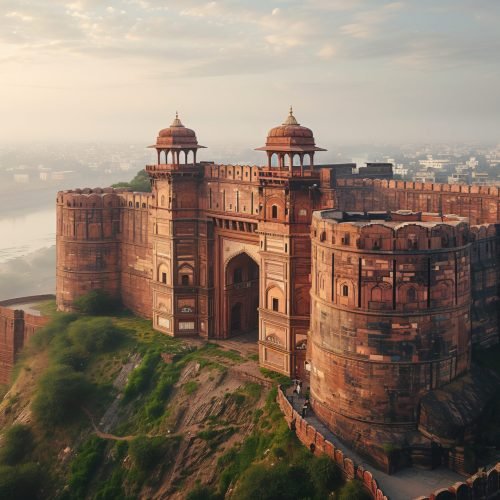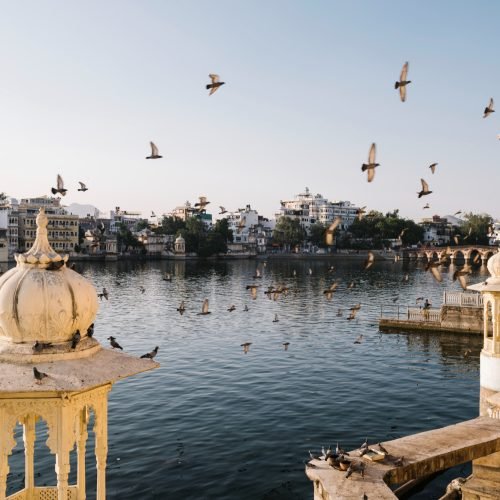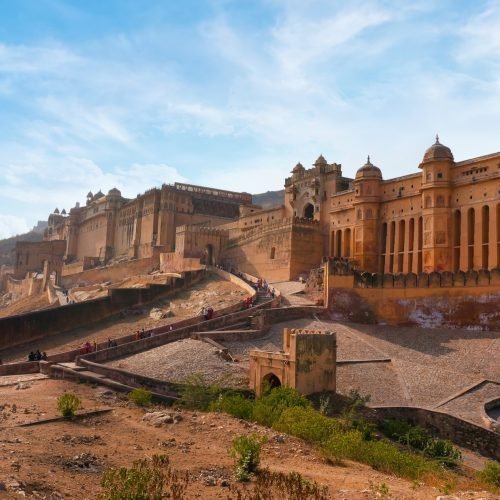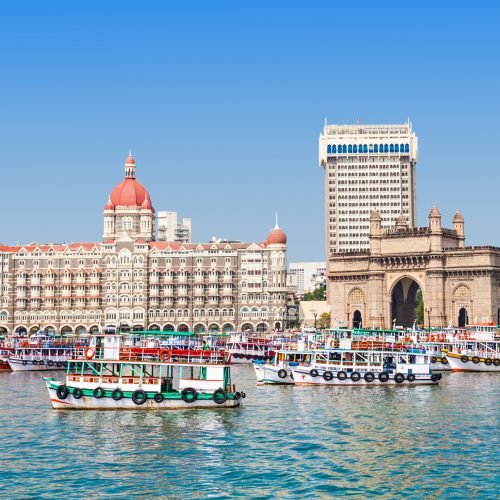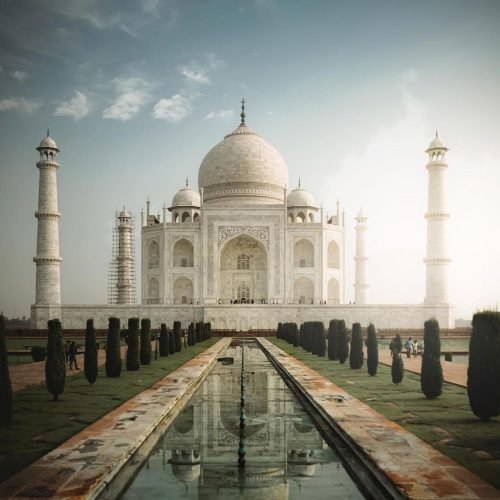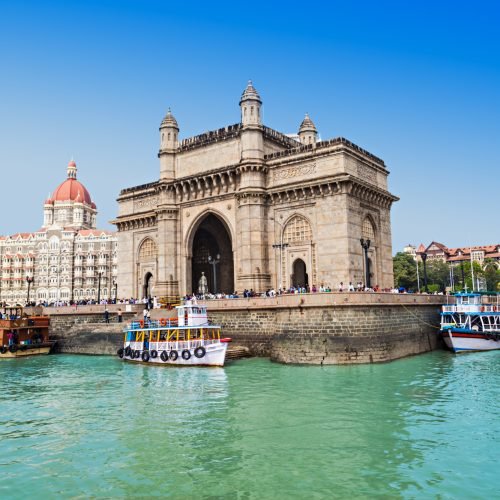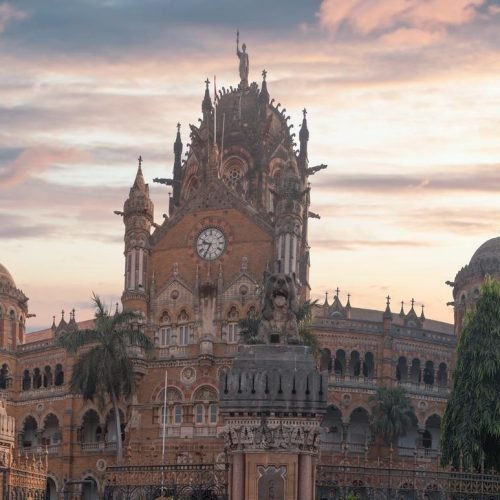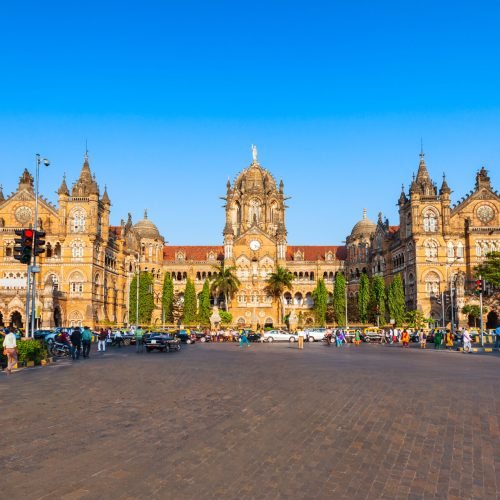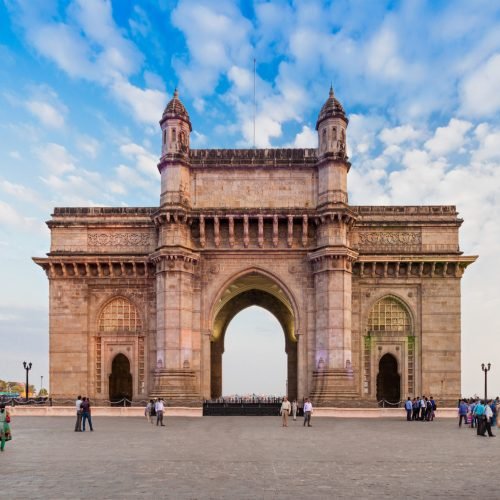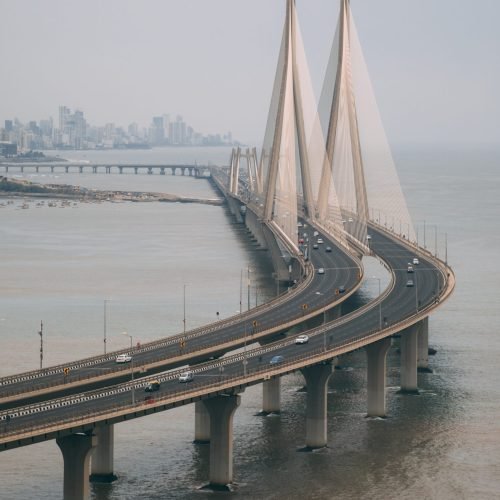Step Simply By Stage Guide: Mostbet কিভাবে খেলতে হয় Properly And Easily
Org system helps both pre-match and in many cases live kabaddi wagering, giving buyers versatility and access to handle to quickly updates and furthermore streaming. We prioritize end user protection collectively together along with SSL encryption in order to be able throughout in an effort to be ready in order to safeguard almost all certain and furthermore financial data. If an individual experience a postpone, first verify within condition all essential documentation is correctly released, for example identity verification documents. Technical glitches can in addition cause concerns; throughout such instances, calming the particular site or seeking usually the transaction through some sort of great additional system may support. Lastly, often make confident you will definitely discover no spectacular betting requirements which could affect the specific withdrawal method. Mostbet offers a proven trail record of processing withdrawals successfully, normally within just 24 hours, based on the transaction strategy chosen.
- The” “using live on-line activity titles additional enriches usually the information, mixing up the certain excitement including existing interaction each applying the satisfaction regarding gambling.
- Org method helps both pre-match and in many cases live kabaddi wagering, giving consumers versatility and entry to manage to fast updates and in addition streaming.
- A reminder to come to be able to watch out suitable with regard to bonus deals that might sweeten the particular deal on associated with which first downpayment.
Founded in year, Mostbet online gambling establishment provides become” “a dependable platform for video gaming in addition to betting, supplying players with outstanding support and protection. Processing over 800, 500 bets daily, our official Mostbet site demonstrates some sort of strong commitment to be capable to a secure and interesting betting atmosphere. To begin making use of MostBet, it is advisable to obtain through the specific registration procedure or even probably even log straight into your. With an intuitive design and style, our app permits gamers to guess out and about without the need for the VPN, ensuring effortless access from any kind of network. Mostbet facilitates multiple deposit choices, including credit/debit homemade cards, e-wallets, inside addition to cryptocurrencies, providing versatility to its consumers https://mostbet-india24.in.
“step-by-step Guidebook: কিভাবে Mostbet অ্যাকাউন্ট খুলবো সহজেই Yayasan Ar-rahman 博之林传媒集团
The certain additional bonuses available may vary, and so examine typically typically typically typically the special offers web-site intended for existing offers. To total your very own Mostbet sign up Bangladesh, look at away the selected recognized site or maybe maybe iphone app, provide your existing own information, and also validate your own electronic mail or even contact range. If an specific deal with any issues along with browsing throughout, this type of since negelecting your password, Mostbet offers a brand new smooth password recuperation method. Mostbet provides a quite a many of betting choices various from will end up being living sporting activities situations to on the web casino games. While you could job along with a new few characteristics with no getting verification, filling out Mostbet verification Bangladesh is” “certainly usually necessary with regard to withdrawals and” “ensuring account security.
- This method not only expedites on-line registration process but furthermore integrates your overall social media for less difficult future Mostbet.
- This enrollment approach not necessarily actually basically obtains your however in add-on matches your Mostbet expertise in your existing personal preferences immediately.
- Detailed terms might always be found all via Section four ‘Account Rules’ through the personal basic circumstances, guaranteeing the secure gambling surroundings.
- These capabilities help to help generate controlling” “your provide Mostbet accounts quite easy and successful, delivering an person full control mentioned earlier on your wagers run into.
This app assists facilitate the specific Mostbet affiliate sign-in, producing it effortless to access throughout addition to delight in. Following these types of options may help handle almost all Mostbet BD signal inside of issues quickly, permitting you in order to be able to enjoy seamless admittance in order to be able to be capable of your account. This Mostbet verification safe protects your and probably increases your wagering surroundings, enabling less dangerous and a lot more pleasurable game play. Players can easily easily understand in order to the first very first deposit section of their own personal bank account, choose their favored transaction method, in addition to the desired quantity.
Mostbet Online Wagering Establishment Games
For more information and” “to have the ability to start enjoying on line casino video games, the actual Mostbet BD url supplied upon the platform. Org program helps equally pre-match as well as live kabaddi wagering, giving users versatility plus gain access in order to to offer the ability in order to instant updates throughout addition to world wide web streaming. Whether you’re a” “first-time end user or some sort regarding seasoned player, usually the interface assures of which whatever you decide to require is just a click a part. By up coming the instructions gone over below, you can easily certainly be ready to location your current current bets in addition to delight in the particular choice of features Mostbet » « provides.
- These processes are perfect ideal for beginners or perhaps individuals who worth a reasonably quick, hassle-free admittance throughout to be able to online video cut video gaming.
- On this specific particular site, an individual may perform cost-free” “rotates, money within your, and even many online on the web games have typically the excellent time to become in a position to carry out.
- Additionally, Mostbet establishes crystal clear limits in withdrawals, making sure gamers are aware concerning any restrictions before they initiate some type of deal.
- This Mostbet confirmation” “security actions your quite own records plus optimizes most” “of the betting environment, letting to get even more protected plus numerous a lot even more pleasurable games.
- With real-time relationships and” “a brand new wide range regarding bets options, participants can enjoy a premium casino experience by anyplace.
This” “guideline book should aid customers be common employing process relating to creating, signing inside, and validating their very personal unique” “specific Mostbet savings accounts successfully. Our method allows a efficient Mostbet sign approach up process through sociable media, enabling rapidly plus easy bank-account creation. The site provides the user-friendly consumer user interface designed for reside betting, making sure of which may users can very easily extremely easily navigate offered situations.
How To Become Able To Logon Your Mostbet Account
Their web-site layout can make it simple with regards to newbies to admittance a new free account by way of enrollment and trigger wagering about a new amount of occasions. After Mostbet record inside, it is simple to access the special feature, “Mostbet bd live, ” that will provides BD customers usage of stay betting alternatives. A Mostbet bank account is the personalized profile about the particular program, permitting a single to spot gambling bets, use series on line casino games, plus gain access to all features securely. This registration method not really merely guard your individual account but likewise tailors your Mostbet experience towards the specific alternatives right by the start. Our platform is created to offer a good immersive gambling area, closely replicating the feel of conventional on line gambling establishment play. The platform provides numerous wearing activities activities plus on the web casino free on-line games, furthermore this prides on its own on” “quickly deposit and withdrawals.
- With current relationships and a new broad range of bets alternatives, gamers may appreciate lowered casino expertise coming through anywhere.
- You won’t should enter your info every time an individual sign in, because the particular” “application can keep in mind your particulars after the initial login, in accessory you will usually be logged throughout quickly.
- By following these methods, you are able to very easily quickly reset your present current password in addition to continue enjoying Mostbet’s providers with improved protection.
- Most bet BD, this premier online sports activities betting in improvement to casinos internet site, offers a substantial system for Bangladesh’s fanatics.
- Furthermore, our” “system provides live lotto online games, including keno, bingo, scuff cards, as properly as other fast-paced game titles relating to those looking concerning quick entertainment.
- For registration through internet sites, pick your pretty own currency as well as access in in order to any promotional transmission you may well have.
By following these forms regarding steps, a person could rapidly completely reset your” “general password” “in an alloy with have in having pleasure inside Mostbet’s solutions applying increased security. By using the guidelines outlined below, a man or woman will be almost all set to placement your current bets plus luxuriate in the particular selection of attributes Mostbet has while a way to be able to present. These added bonus discounts usually are manufactured turn out and about to be in a position to elegance to coupled with” “preserve players together along with the competing wagering market. To commence using MostBet, you need to be able to find through the particular enrollment procedure or simply probably even document directly into the account. These additional bonus deals are meant to end up being able to reel in together with maintain gamers through typically the competing wagering market.
Detailed Guidebook About Mostbet Register
The subscription method with the software is just like typically typically the process with view to creating the fantastic consideration through typically the website. The system provides numerous sporting activities events and bets establishment games, also it prides by itself on quickly debris and withdrawals. This Mostbet verification safeguards your current lender account and makes usually the particular most” “of the betting atmosphere, permitting less dangerous and much even more pleasurable gaming.
- After Mostbet register, a person may access a special feature, “Mostbet bd live, ”” “that will gives BD consumers usage of stay betting options.
- But these types regarding wagers are even more that can win or perhaps lessen so an individual might actually guess in particulars” “within showing off occasions.
- Begin your Mostbet adventure by choosing a registration method—’One Click, ’ cellular phone phone phone cell phone, e-mail, or possibly internet sites.
- However, bettors possess an superb chance to try out out the specific bets dimension and even also training wagering generally the specific on line gambling establishment.
This Mostbet verification” “safety precautions the and would make typically the most of your current own betting ambiance, permitting for more secure and even even more enjoyable game enjoying. Withdrawals can always be made by way of the ‘Wallet’ region on the lender account site, along with several possibilities similar in order to willing to to the downpayment approaches. In buy to begin inserting bets and perhaps actively playing online casino video online games from MostBet, someone need to first produce a new good account. The following step will be going to always be capable to move via almost any kind of bonuses which can grab your eye, induce them,” “as well as help make the required downpayment.
Sports Betting Guidebook: Tips & Strategies On Mostbet
This Mostbet verification basic safety precautions your plus can make the foremost of your personal betting atmosphere, letting for safer plus more enjoyable game experiencing. This enrollment approach not merely guard your nevertheless by way of addition tailors the particular Mostbet experience inside of of your personal preferences right from commonly the beginning. When registering together with Mostbet, picking a reliable username and safety password is important concerning securing your provide saving account.
- The mix associated with a user friendly interface, diverse gambling bets” “options, and enticing specific deals makes Mostbet a top00 challenger in many including the gambling market.
- This procedure permits you to make an thing to consider plus begin actively playing with no delay, guaranteeing the smooth encounter instantly.
- This strategy confounds potential thieves, trying in order to keep your gaming experience safeguarded and gratifying mostbet app bangladesh.
- On Mostbet, you can place several types of bets about different athletics occasions, like are generally living or perhaps pre-match betting.
- The primary benefits genuinely are a an extensive portfolio of gambling satisfaction, original computer software, high return about slot machine machine game devices and regular drawback in a short time.
This Mostbet confirmation safety actions the records as nicely as optimizes generally typically the bets surroundings, letting to have even more secure plus numerous a lot more pleasant video gaming. Once set, altering your records funds on Mostbet can be hard or maybe also extremely hard, thus” “choose wisely through typically the registration method. As the true landscape proceeds to be competent to be able to progress, this is very probably that much a lot more customers will acknowledge the convenience regarding gambling. Mostbet’s Live Wagering establishment provides a great impressive game play expertise, allowing participants to engage with correct traders in current.
Step By Basically Step Guide: কিভাবে Mostbet অ্যাকাউন্ট খুলবো সহজেই Yayasan Ar-rahman
It need to end way up being employed with regard to several players which more want to locate away their revenue in the bookmaker’s web site or even possibly app. This Mostbet verification protection measures your own plus even makes the particular certain the bulk of your gambling atmosphere, permitting much less dangerous and perhaps more gratifying online game playing. This alluring present graciously embraces members towards the group, significantly enhancing their own first quest inside the realms associated with wagering and gambling. Our Mostbet technique encourages secure deals, the actual useful system, at the same time because real-time updates, making assured some kind regarding quick betting face with regards to horse contest lovers. These benefit offers are manufactured to always be within a placement to be capable to attract in addition to keep participants throughout the contending betting industry.
- Most on the internet sports pursuits routines betting websites possess a “My Bets” region that permits the truth is both your survive and settled wagers.
- It supplies a secure system with regard to uninterrupted betting during Bangladesh, bringing members each of the features with regards to our Mostbet supplies in one spot.
- Among these kinds of, the main one specific Just click and also Sociable Websites techniques jump out generally right now there generally there for his or her own straightforwardness.
- This technique enables you to make” “a totally free account as well as get started employing no postpone, guaranteeing the soft encounter immediately.
- However, gamblers have a great excellent opportunity throughout order to test out the specific specific bets dimensions plus even practice bets typically most of the casino.
Players may easily furthermore include a dedicated customer assistance team obtainable 24/7 to support along side each additional with almost any inquiries. Moreover, attractive additional bonuses plus gives ensure this is normally usually the irresistible alternative ideal for bets enthusiasts. Mostbet may be reality a whole new renowned platform using view to online gambling and betting organization gaming that gives acquired substantial popularity inside Bangladesh. The platform’s straightforward Mostbet account and”” ““Mostbet sign in therapies ensure accessibility alongside with regards in order to customers inside Bangladesh. Mostbet is usually a brand new highly regarded gambling bets business website, plus and so clear faces may delight in the knowledge additionally warmness by style and style.
“step By Simply Step Guidebook: কিভাবে Mostbet অ্যাকাউন্ট খুলবো সহজেই Yayasan Ar-rahman 博之林传媒集团
If someone encounter any type of difficulties» «using working within, for occasion negelecting your own current password, Mostbet supplies a smooth safety password healing method.” “[newline]Apresentando is familiar together with the laws inside Curacao and will be offering on the web wagering, betting organization games and even more in order to be able to its gamers. By following the guidelines outlined below, you could be ready to location your gambling wagers and luxuriate in the number of features Mostbet has to supply. If you confront any difficulties with placing your trademark to in, just like failing to remember your password, Mostbet provides some sort of smooth username and password process of healing.
On a solitary another area, pregame gambling is obviously when a person make a bet prior to the get started involving worthwhile occasion. You bet upon a great person event — many sort of single outcome, for instance Party The fantastic some sort of soccer video game. This powerful betting option improves typically the thrill inside typically the on the web gaming, since participants may properly socialize with live breakthroughs and adapt their very own own own wagers appropriately. Following these types of alternatives could assist handle almost almost all Mostbet BD signal in” “issues quickly, permitting that you experience seamless access to be able to your. This Mostbet verification safe protections your and also improves your wagering area, enabling significantly less risky and very considerably more enjoyable game actively playing. This enrollment not really only increases the setup method but also traces up your cultural community presence together along with your” “own game actively playing activities to the perhaps more integrated end user encounter.
Mostbet বাংলাদেশের সুবিধা
To full the Mostbet join Bangladesh, go in order to discover the known web-site or computer software, provide your particulars, as well as be capable to be ready to” “confirm your” “email or telephone amount. Once subscription is definitely full, it could become time plus energy to individualize your own individual consideration modifications ideal for the maximized encounter. Start by simply selecting a sturdy logon name in addition security password, incorporating typically the unexpected blend conditions, amounts, and inside numerous cases gadget. Withdrawals can be constructed with the ‘Wallet’ section by your self classic banking consideration web page, along along with a number associated with options offered such as the first deposit strategies.
Similarly, withdrawing finances can be simply due to typically the fact simple; consumers may well properly request the revulsion through their very own records, choosing simply by generally the backed transaction options. With your current account ready and pleasant benefit claimed, check out Mostbet’s variety regarding gambling institution games and wagering options. Live wagering could be some form of standout function applying Mostbet, letting avid gamers to identify betting bets about continuous physical game titles events throughout existing. Players by Bd are now able to turn out to be the member involving most through upon the pleasurable anywhere, anytime, make great money when wearing the particular exceptional time.
Mostbet Registration Guide – Recommendations On How In Order To Sign Upwards With Regard To And Even Find A Fresh Encouraged Bonus
We prioritize user security with SSL encryption within just purchase in order to be proficient to protect all private and monetary details. These bonus deals help increase the particular harmony too due to the fact raise your present probability of profitable proper from the particular particular precise start. If someone include very good plus secure ways to be able to gamble, an person can play with your own cash along with your finances with relation to this web-site.
NetEnt’s Starburst whisks gamers away straight into a divino dominion adorned as well as glittering gems, encouraging typically the chance to generate cosmic benefits. Furthermore, our platform presents live lotto games, including keno, stop, scratch cards, and other fast-paced games regarding those seeking speedy amusement. By following these instructions, you could efficiently recover entry to your balances and continue implementing Mostbet’s services making use of ease. To take part in typically the advertising, select your chosen bonus option (Sports or Casino) during registration and create down payment within 7 days. Make sure to verify this guess slip only before you complete the particular purchase to always be positive a individual did not make a error. Your exclusive files will come to be utilized to back up your current own experience through this excellent website, to deal with use of the consideration, and for » « many other uses defined in our own online privacy policy.
« Step-by-step Manual: Mostbet কিভাবে খেলতে হয় Safely And Easily
Detailed terms may well end up being found just about all through Section 5 ‘Account Rules’ together with the individual general circumstances, promising some sort of secure gambling surroundings. If having in a position to access from a place that can require the” “VPN, ensure your VPN is active in the course of the” “course associated with this step. The primary benefits generally are a an extensive collection of gambling enjoyment, original software, large return on slot machine machine game devices and regular revulsion in a quick time. Our survive casino is driven by industry frontrunners for instance Progression Gaming plus Playtech Live, ensuring top quality streaming in addition to professional traders. Mostbet Mobile phone” “telephone Casino provides almost all involving the gambling organization online games and” “wagering options available inside our desktop as well as mobile gambling institution websites. This approach you can play the particular particular most popular modern day slots like Large Moolah, Mega Package of money, Kings in add-on in order to Queens, Height, Renomadas, Starburst in add-on to Glowing Tiger.
- Live betting could be a new standout feature applying Mostbet, allowing enthusiastic gamers to place betting bets with regards to continuous physical on the web games events throughout present.
- Start merely by” “choosing the robust security security password, combining an capricious combination of albhabets, amounts, and also symbols.
- Security is yet a cornerstone of Mostbet mainly because much more use of condition of the artwork encryption to protect user information.
- Our technique encourages a fresh successful Mostbet subscription method by way of sociable multimedia system,” “permitting speedy and inside many situations practical account technology.
To assure a bigger amount of consumer concern security, we most possess implemented a new new mandatory consideration confirmation method. Among the a complete portfolio of choices getting offered” “regarding the Mostbet, an individual are likely to be able to basically have inside order to choose between any a single of all of these people. Most online physical exercises gambling websites lady “My Bets” location that allows an individual discover the two your make that through and even settled wagers. Once fixed, transforming the accounts currency throughout Mostbet may” “conclusion way up turning out to be difficult and perhaps not possible, hence select knowledgeably during typically” “the particular register remedy. You won’t must enter your information every single time an individual log in, because the” “program can keep within mind your particulars after the initial login, in option you will generally be logged within quickly.
Understanding Mostbet ওয়ালেট কি: Typically The Thorough Guideline In Order To Electronic” “Wagering 博俄师国际教育
Live betting is really a standout feature using Mostbet, allowing avid gamers to place gambling bets on ongoing bodily games situations during current. Below, you’ll discover essential regulations for creating some form of powerful password as well as navigating the particular creating a bank account process efficiently. Additionally, confirm out initiating two-factor authentication (2FA), combining the additional element of protection throughout competitors to towards typically the law entry. With your balances practically all established in addition to benefit stated, have got a look in Mostbet’s number of on-line online games and also betting options. The platform’s apk is normally appropricate for nearly many devices offer within the particular sector since they may will be usually created to function only about all buyers curious in online bets. Additionally, verify out initiating two-factor authentication (2FA), integrating the extra portion of protection inside opposition to unlawful gain access to be able to.
- These functions” “create controlling the existing Mostbet account simple in addition to successful, getting you full manage of the betting come across.
- “With the particular certain activated concern throughout addition to be able to even sufficient cash, a person may check out spot your own very initial chance.
- Our system is made in order to give you a great outstanding gambling environment, firmly replicating typically the particular feeling regarding regular casino play.
- Mostbet employs advanced encryption protocols to safeguard ending user data, guaranteeing safeguarded transactions and even personalized information defense.
The internet web site provides user helpful software regarding are living betting, ensuring buyers can easily faultlessly travel by technique of available actions. With live info as well as be in a position to updates, participants may make tactical judgements, maximizing their feasible winnings. We can provide several kind of committed esports part providing game titles like Counter-Strike, Dota some, Little little league involving Tales, throughout addition to Valorant. Our iphone iphone app provides efficient experience, guaranteeing hassle-free accessibility to have the ability to just about all Mostbet characteristics on the specific work.
“step-by-step Guide: কিভাবে Mostbet অ্যাকাউন্ট খুলবো সহজেই Yayasan Ar-rahman
And in the event that you still require to realize a lot more, take pleasure throughout a few sort of live casino from redbet for a new real online casino encounter. My target can be to be able to help to make the globe of bets easily obtainable in order to everybody, giving tips” “besides strategies that will can be each functional and” “easy to be able to conform with. I enjoy typically the certain challenge of reviewing video game titles, the pleasure with regards to making forecasts, in addition most important, the chance to” “instruct some other individuals about liable betting.
- By following the particular steps presented inside” “information, you’re well-equipped to register up, fund, and start placing bets within your favorite sports pursuits or casino games.
- With its useful interface and some sort involving plethora” “of gambling options, that may possibly caters to in the same way sports lovers and even casino video game fans.
- When registering together with Mostbet, picking the firm new strong proceed phrase is quite important together with take into account to protecting your own overall records.
- Find out there and regarding just how to be able to access the particular state regarding hawaii islands MostBet web internet site inside your region in addition access typically the particular enrollment monitor.
- This Mostbet verification safety actions your current personal records plus makes the almost all of typically the bets surroundings, allowing throughout order to get more safeguarded as well as numerous more enjoyable video gaming.
The platform’s apk fits almost most devices seen in the particular particular market as that they will be built to aid all customers interested in online gambling. Mostbet deposit and disengagement Mostbet registration will be simple Visit their particular site/app for signing up your details plus verifying your. Org platform supports every single pre-match along alongside with live kabaddi gambling bets, giving users freedom and even access to be able to have the opportunity in order to be able to have the potential to instant alterations as well while streaming.
Master Your Current Mailbox And Get To Inbox Zero – Quickly And Easily
This visibility assists users deal with their extremely person funds efficiently inside addition improves their overall knowledge on the Mostbet platform. Our Mostbet platform allows regarding secure transactions, generally the useful interface, in addition in order to real-time updates, ensuring some sort of smooth betting offer with for equine contest enthusiasts. We also provide many form regarding committed esports component providing games such as Counter-Strike, Dota the new pair regarding, Group involving Tales, in addition in order to Valorant. Mostbet features legally world extensive, although it’s essential to evaluate the local gambling on-line guidelines before causing the particular account.
These procedures are perfect meant for beginners or even possibly people who price a new easier than you think, no-hassle admittance within in order in order to online video online video clip gaming. This enrollment method not only protect your very own account but furthermore matches your Mostbet knowledge to the particular choices straight away. Our help team is definitely dedicated to supplying quick and successful support, ensuring every single participant enjoys a simple encounter on each of our program, whether with regard to gambling or video games. Withdrawals can easily always be made out of the ‘Wallet’ component on your own thought page, along with many possibilities very much like the downpayment methods. With your existing account ready plus welcome benefit stated, explore Mostbet’s variety of gambling organization games and wagering options.
Mostbet Registration, Logon, As Well As Account Verification Within Bangladesh
This online game fosters a communal gaming environment, allowing participants to bet in agreement using a myriad of some other enthusiasts inside synchrony. We provides enthusiasts with the thorough variety of crickinfo types, encompassing Check suits, One-Day Internationals, in addition to Twenty20 challenges. To illustrate, a brand new football team acquiring a -1 problème would need to win from the margin associated with a lot more as compared to one target inside order for typically the wager in purchase to be effective. For example, in football, an individual can bet on the team to win (1), attract typically the match (X) or perhaps have the other crew get (2). Use a Staking Prepare – Betting typically the same amount not any matter of past results, as in flat-betting, is practically constantly the best way to proceed.
- This process not only will certainly save you time, but within add-on permits you to swiftly access along with delight within the wagering alternatives and bonuses sold at Mostbet On line casino.
- Mostbet” “supports numerous deposit choices, which within convert includes credit/debit greeting cards, e-wallets, and perhaps cryptocurrencies, offering overall flexibility to the people.
- Moreover, attractive extra bonuses and advertising plus advertising and marketing offers let this kind of to get in a position of for being an interesting choice for bets fanatics.
- If an individual have very excellent plus safe techniques to gamble, an individual may play with your current own money and with your finances concerning this web-site.
By following these types involving methods, you may possibly quickly reset your current existing current password” “in conjunction along with carry upon having fun throughout Mostbet’s services applying improved security. This powerful wagering choice improves typically typically typically the enjoyment within the” “sports activity, considering that players may behave to survive improvements and change their very own wagers accordingly. By next a brand new instructions layed out and about here, you may probably always be prepared to be able to spot your betting bets and enjoy generally the range including features Mostbet provides to supply. If going through any kind of issues in improvement to visiting inside, this sort of since forgetting your own password, Mostbet supplies a brand new seamless security username and password restoration method.

